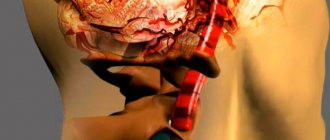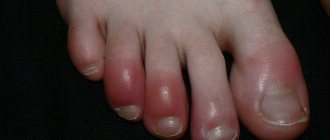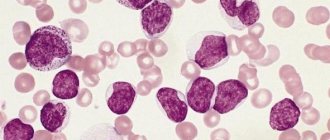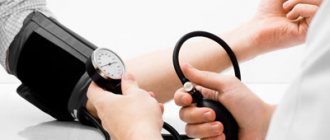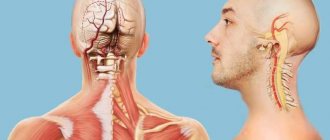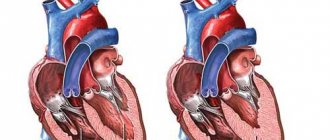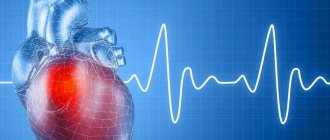What is GGS?
In a healthy body, all systems and organs work as intended by nature, with their own characteristics and certain sequences of various processes. Sometimes it happens that some system begins to work incorrectly, this leads to the development of problems in the functioning of one or another organ or the system itself, which affects the well-being and health of a person. Hypertensive-hydrocephalic syndrome is a violation of the production of cerebrospinal fluid (CSF), its exchange and absorption with gradual accumulation in the ventricles and under the membranes of the brain. Hydrocephalus is formed, leading to hypertension - increased intracranial pressure. All together it is a hypertensive-hydrocephalic syndrome.
Treatment of hypertensive-hydrocephalic syndrome
Since the treatment of hydrocephalic syndrome is complex and has a number of side effects
, it should begin after an accurate diagnosis and a thorough examination of the patient using special equipment. This is not the case when you can prescribe treatment “for prevention”, because there is a risk of unreasonably harming your health.
Posterior reversible encephalopathy is a clinical and radiological entity characterized by headache, somnolence associated with cortical blindness and cerebral edema on neuroimaging, whose classical causes are eclampsia, hypertensive encephalopathy and immunosuppressants.
A 33-year-old woman with systemic lupus erythematosus presented to the emergency department with headache, agitation, and amaurosis. There were no signs of meningeal or motor lesions. Ananide analysis, except proteinuria. These findings suggest reversible posterior encephalopathy lesions. As a treatment for a hypertensive emergency with favorable evolution, achieving normotension levels in the following days with valsartan and lercanidipine.
Treatment methods:
- The use of
special medications in combination with massages and physiotherapy; - Surgery
(bypass surgery or removal of a tumor that interferes with the outflow of fluid).
Forms of the syndrome
Hypertensive-hydrocephalic syndrome is a special condition of the brain caused by the accumulation of cerebrospinal fluid (CSF) and the subsequent increase in intracranial pressure (hypertension). Clinicians identify several types of this symptom. The main division is the open (non-communicating) and closed (communicating, obstructive) form of the disease, characterized by the characteristics of the collection of cerebrospinal fluid.
Doctors divide the open, non-obstructive form of hypertensive-hydrocephalic syndrome into three types:
- hypersecretory, determined only by the presence of choroid plexus papilloma, as well as in acute inflammatory diseases of the brain and its membranes;
- hyporesorption (aresorptive);
- hypersecretory-hyporesorption (mixed) form.
Closed, in turn, is divided into:
- monoventricular - asymmetric;
- biventricular - both ventricles and interventricular spaces are affected;
- triventricular - when the cerebral aqueduct is blocked, the lateral ventricles are dilated;
- tetraventricular - all parts of the ventricular system, interventricular foramina, and cerebral aqueduct are affected.
Mild hypertensive-hydrocephalic syndrome is an absolutely conventional, everyday term. It implies no changes in the brain due to the presence of HGS, with a slight increase in intracranial pressure and a positive potential for recovery.
Hypertension syndrome
Due to injuries, tumors, cerebral hemorrhages, encephalomeningitis and other brain diseases, hypertension syndrome may develop.
This is increased intracranial pressure. Men suffer from it more often than women, but no such differences are observed among children. Hypertensive syndrome is associated with the formation of an excessive amount of cerebrospinal fluid in the spinal cord trunk, a violation of its circulation. This leads to stagnation of cerebrospinal fluid under the membranes and in the ventricles of the brain. Hence another name for the pathology – liquor-hypertension syndrome.
Causes
The causes of hypertensive syndrome can be either congenital or acquired. These include:
- inflammatory processes in the spinal cord and brain;
- various neoplasms;
- prolonged hypoxia;
- hematomas;
- excessively low vascular tone;
- diseases of the central nervous system caused by parasites;
- traumatic brain injuries;
- long waterless period;
- hydrocephalus, cerebral edema;
- congenital abnormalities in brain development;
- complications during pregnancy and childbirth;
- deep prematurity;
- late birth;
- intrauterine infections.
Hypertension syndrome in children
Hypertensive syndrome is very common in neurology in young children with perinatal encephalopathy.
Symptoms
Hypertension syndrome in children has the following symptoms:
- restless behavior;
- sleep disorders;
- dizziness;
- crying that seems unreasonable at first glance;
- constant attacks of headaches in children, and after them - vomiting;
- sweating;
- unstable temperature.
The well-being of children with hypertensive syndrome greatly depends on the weather.
Treatment
Treatment of the syndrome in children should be carried out up to a year to prevent developmental delays.
- Hypertension syndrome in children is treated by reducing the production of cerebrospinal fluid and accelerating venous outflow with diacarb, furosemide (Lasix), 25% solution of magnesium sulfate, 50% solution of glycerin, sorbitol, aminophylline and rigematin. All these remedies are designed to reduce intracerebral pressure.
- Children suffering from hypertension syndrome also need anti-inflammatory, desensitizing and resorption therapy measures; in the absence of a brain tumor, physiotherapeutic procedures, for example, proper massage. Children need to be given B vitamins, aminalon, glutamic acid, lipocerebrin, nootropil.
- In autumn and spring, prevention of hypertensive syndrome in children is useful - courses of dehydration, anti-inflammatory, and restorative therapy.
Treatment of sick children during the acute period must be carried out in a hospital setting. With frequent exacerbations, it is advisable to educate children in sanatorium-forest boarding schools.
Children who are sick with hypertension syndrome are required to undergo a preventive examination. You need to visit an ophthalmologist for a fundus examination at least twice a year. An x-ray of the skull is required once every 2-3 years. Children who have suffered inflammatory diseases of the brain or who have had brain injuries should be observed at a dispensary.
Hypertension syndrome in adults
Adults, unlike children, are able to describe the bursting nature of the headache, so their hypertension syndrome is easier to identify.
Causes
- meningitis;
- head injury;
- cervical osteochondrosis.
Surgical method of treatment
In case of complications, treatment of human hypertensive syndrome is carried out surgically. In order to remove excess cerebrospinal fluid and reduce pressure, a spinal puncture is performed. This is a very painful but effective operation.
Recovery strategy
The most important condition for successful recovery from this type of disease is strict adherence to bed rest throughout the entire course of treatment.
After measures have been taken to eliminate the disease, it is necessary to get rid of the causes leading to decompensation - you should not overexert yourself emotionally and physically.
You should also follow an acceptable regime and daily routine: spend less time in the sun, especially if it is strong, for example, during lunch and afternoon; in no case should you engage in active sports that include sudden movements, tilting your head, jumping, running .
Source: https://prosindrom.com/neurological/gipertenzionnyj-sindrom.html
Possible causes of the disease
Increased intracranial pressure as a result of the accumulation of excess cerebrospinal fluid is called hypertensive-hydrocephalic syndrome. In children and adults, this pathology can develop for many reasons:
- metabolic disease;
- neoplasms;
- hematomas in parts of the brain;
- hypertension;
- stroke;
- viral diseases - encephalitis, malaria;
- splintered injuries of the skull;
- parasitic cysts.
Arterial hypertension syndrome
In medicine, hypertensive syndrome usually refers to secondary, or symptomatic, arterial hypertension.
According to statistics, in more than 90% of cases the cause of persistently high blood pressure cannot be determined, so a diagnosis of “essential (primary) arterial hypertension” is made.
In other cases, hypertension is caused by a disease of any organ involved in blood pressure regulation. That is, one of the signs of this disease will be increased blood pressure with its characteristic symptoms.
This symptom complex is hypertensive syndrome. It is often difficult to lower blood pressure in these cases.
Characteristics of the syndrome
High blood pressure affects the entire body and is the main damaging factor. The elements that make up the syndrome include:
- High blood pressure (exceeds 140/90 mmHg).
- High levels of bad cholesterol in the blood.
- High loads on the left ventricle (according to ECG).
- Atherosclerosis of arteries (aorta, iliac, carotid).
- The appearance of protein in the urine.
- As a result of prolonged exposure to a damaging factor, the kidneys, myocardium, and retina, which are target organs, are affected.
Left ventricular hypertrophy, retinopathy (vascular disorders of the retina), hypertensive nephropathy (impaired kidney function) are observed.
It is important to know that a person may not feel high blood pressure and may not be aware of changes occurring in the body. In this case, it is possible to detect violations only through hardware research.
But a number of signs may appear already in the early stages of the disease. These include the following symptoms:
- headache;
- redness of the facial skin;
- flickering of spots before the eyes, blurred vision, decreased visual acuity;
- rapid heartbeat, which may appear intermittently;
- predominance of night urination over daytime urination.
At later stages the following manifestations occur:
- angina pectoris;
- heart failure;
- signs of encephalopathy;
- ischemic stroke.
Diseases that cause increased blood pressure
The list of these pathologies is quite large (more than 50). These are mainly diseases of the kidneys, blood vessels and heart, nervous and endocrine systems:
You can also read: Causes of high blood pressure in women
- glomerulonephritis (acute and chronic);
- polycystic kidney disease;
- hydronephrosis;
- kidney tuberculosis;
- stenosis of the renal arteries;
- urolithiasis disease;
- kidney amyloidosis;
- pyelonephritis;
- nephropathy in diffuse connective tissue diseases (lupus erythematosus, scleroderma, periarteritis nodosa, etc.)
- diabetic nephropathy;
- pheochromocytoma;
- hypercortisolism;
- pathologies of the thyroid gland;
- adrenal diseases;
- metabolic diagnosis (or metabolic syndrome), characterized by disorders of lipid, purine and carbohydrate metabolism;
- hypoxia;
- coarctation of the aorta;
- heart defects;
- porphyria;
- erythremia;
- late toxicosis during pregnancy.
The mechanisms for increasing and maintaining pressure differ in different diseases.
The pressure in pheochromocytoma reaches especially high values. With bilateral damage to the adrenal glands, hypertension has a malignant course with a high probability of developing crises.
In some cases, most often with diseases of the central nervous system, not only blood pressure may rise, but also intracranial
Clinical manifestations of ICP are called “hypertension syndrome”, and the main reasons for its development are as follows:
- head injuries (craniocerebral);
- infectious diseases of the central nervous system;
- endocrine pathologies;
- consequences of certain infections (bronchitis, otitis);
- severe toxicosis during pregnancy, prolonged labor;
- hydrocephalus, or cerebrospinal fluid hypertension (dropsy in the head);
- tumors, hematomas, cerebral edema;
- cervical osteochondrosis;
- meningitis;
- long-term use of contraceptives and antibiotics.
According to most doctors, the main cause of hypertension syndrome is a violation of the outflow of cerebrospinal fluid (CSF) and its stagnation in the brain.
Manifestations of hypertension syndrome
- Expanding headaches are common. They usually begin at night or in the morning with heaviness in the head.
- Blood pressure jumps, and there are complaints of rapid heartbeat and increased sweating.
- Nervousness, rapid excitability for no reason.
- Nausea, regardless of food intake, which sometimes turns into vomiting.
- Fatigue sets in quickly even with low physical or mental stress.
- Difficulty breathing, shortness of breath.
- Pain in the spine.
- Goosebumps running through your skin.
- Muscle weakness.
- The appearance of blue circles under the eyes.
- Dependence of well-being on weather conditions.
Syndrome in children
Hypertension syndrome can also be diagnosed in children.
It can be difficult to detect it in a small child who cannot describe his sensations, so parents need to carefully monitor him in order to see a doctor in time
The main manifestation of the syndrome is paroxysmal headaches that occur in the morning or at night.
Pathology can be suspected based on the following signs:
- long crying, screaming;
- sleep disorders;
- increased sweating;
- constant anxiety;
- temperature increase;
- bouts of vomiting;
- bulging fontanel.
Treatment of hypertension syndrome
Treatment consists of eliminating the cause of its appearance, that is, the primary disease. If you manage to cope with it, the pressure will normalize on its own. As symptomatic treatment, diuretics, adrenoblockers, vasodilators, and ACE inhibitors are prescribed.
Symptomatic treatment depends on the cause of the increase in pressure:
- For renal pathologies, diuretics are used in combination with beta-blockers.
- For endocrine disorders, a combination consisting of a diuretic, vasodilator, ACE inhibitor and sympatholytic has a good effect.
Conclusion
Hypertension syndrome develops gradually. Over the long term, changes in target organs will not be noticeable, so it is important to monitor blood pressure.
Source: https://icvtormet.ru/diagnostika/sindrom-arterialnoy-gipertonii
HGS in newborns
Hypertensive-hydrocephalic syndrome in infants is a neonatology term that defines a whole set of indicators that characterize the possibility of suggesting an increase in intracranial pressure in a newborn as a result of the accumulation of cerebrospinal fluid in the brain. In the vast majority of cases, this problem develops in the baby while still in the womb. Its reasons may be:
- hypoxia (lack of oxygen) of the fetus;
- pathologies of child development as a result of genetic diseases, drug, alcohol or tobacco intoxication of the fetus;
- fetal injuries;
- trauma when passing through the birth canal.
The risk of a child developing HGS increases sharply in the following cases:
- early or, conversely, late birth;
- toxicosis (eclampsia and preeclampsia);
- pregnancy pathologies (placenta previa, placental abruption);
- premature discharge (more than 12 hours) of amniotic fluid;
- chronic maternal illnesses;
- viral or infectious diseases suffered by the mother during pregnancy;
- multiple pregnancy.
The presence of problems in the development of the newborn is assessed using a special technique called the Apgar scale. It considers a set of certain indicators using a point system. A child born with HGS has scores within 6 points, while an absolutely healthy newborn has 10 points.
Causes of pressure
The causes of high blood pressure in children can only be identified after careful diagnosis.
High blood pressure is recorded in children with vegetative-vascular dystonia. Most often, the lower blood pressure in such children is close to normal, and the upper (systolic) shows high numbers. In such cases, doctors advise normalizing the child’s rhythm of life, balancing rest with active activities, and monitoring proper nutrition.
Hypertension in a child may occur due to concomitant diseases.
Blood pressure may increase due to:
- Disease of the endocrine system;
- Kidney diseases;
- Head injuries.
Therefore, if a child has high blood pressure, then it is imperative to show him to a doctor! Often this is a consequence of the development of a serious illness.
The third main reason for the development of hypertension in a child can be obesity.
HGS in children
Impaired circulation of cerebrospinal fluid, its accumulation in the interventricular spaces and under the membranes of the brain is called hypertensive-hydrocephalic syndrome. In babies born with this health problem, increased intracranial pressure and hydrocephalus affect not only their health and development, but also their appearance. The volume of the baby's head exceeds normal values by 1-2, and in some cases more, centimeters. Another characteristic external sign is sunken eyes and overhanging brow ridges. But HGS can be not only a congenital disease, but also acquired at an older age. For children from 3 to 12 years old, characteristic signs of HGS will be:
- morning headache;
- disorientation in space during headache attacks;
- lethargy and drowsiness;
- inattention;
- memory impairment;
- manifestation of photophobia and fear of loud sounds;
- muscle tone;
- strabismus appears.
This condition often develops after infectious or viral diseases, as well as head injuries.
Hypertension syndrome in children and adults: symptoms, treatment, prevention
Hypertension syndrome is a pathological condition that occurs against the background of increased intracranial pressure. In another way, this phenomenon is called hypertensive-hydrocephalic or liquor-hypertensive syndrome.
General characteristics of the disease
Hypertension syndrome is one of the causes of headaches. Intracranial pressure increases against the background of venous stagnation of blood, which often accompanies pathologies of the cervical spine, for example, osteochondrosis.
Excess cerebrospinal fluid (CSF) forms in the spinal cord trunk, causing circulation problems. As a result, the cerebrospinal fluid in the ventricles of the brain and under its membranes stagnates, causing excess venous blood and subsequent enlargement of the ventricles of the brain.
Causes, risk groups
Hypertension syndrome can affect both adults and children. Among adults, the pathology more often affects men; in children, such selectivity by gender is not observed.
Hypertension syndrome can be congenital or acquired.
Congenital pathology can be caused by the following factors:
- complicated pregnancy;
- difficult childbirth;
- brain hypoxia;
- prematurity (up to 34 weeks);
- late labor (after 42 weeks);
- birth trauma to the head (subarachnoid hemorrhage);
- intrauterine infections;
- congenital brain defects;
- long water-free period (over 12 hours).
In neurology, hypertension syndrome is often diagnosed in children against the background of perinatal encephalopathy, that is, brain damage of unknown origin.
Acquired pathology may be a consequence of the following factors:
- tumors, hematomas, cysts, abscesses;
- foreign body in the brain;
- traumatic brain injury, if there are fragments of cranial bones in the brain;
- spontaneous increases in pressure without an identified cause;
- infections;
- stroke and its consequences;
- problems with the endocrine system.
Hypertension syndrome is often accompanied by an infectious lesion of the brain. In children and adults, not only the possible causes of the disease, but also its clinical manifestations differ.
In adults
The first sign of pathology in adults is usually a headache. More often, its manifestations are especially noticeable in the morning and evening, when a person is positioned horizontally. This position activates the release of fluid and reduces its absorption.
Another important symptom is nausea, which can progress to vomiting. More often this condition accompanies the patient in the morning. Pathology also manifests itself with other signs:
- increased nervousness;
- rapid fatigue, not only after physical but also mental stress;
- decreased libido;
- pre-fainting;
- fluctuations in blood pressure;
- weather dependence;
- heartbeat;
- sweating;
- dark circles under the eyes and a fine venous network in this area.
Similar symptoms are characteristic of other brain diseases, therefore a comprehensive differential diagnosis and collection of a detailed medical history are necessary.
In children
Hypertension syndrome in a newborn child can be suspected by restless behavior and sleep disturbances. The baby often begins to cry loudly and forcefully. Possible increased sweating, nausea with vomiting, temperature changes. During examination, a neurologist can identify pathology based on some specific signs:
- enlarged large fontanelle;
- open small fontanelle;
- open sutures between cranial bones;
- a prominent, developed network of saphenous veins in the forehead and temples;
- increase in head circumference above normal;
- a visible stripe of white above the iris of the eye.
Newborns experience a decrease in muscle tone. The child may react poorly to the breast and refuse to feed. There is no pronounced swallowing reflex.
Older children have severe headaches in the morning. They feel nausea and vomiting. It is difficult for the child to raise his eyes, and turning his head causes pain. Feeling weak and dizzy. The skin turns pale, bright lights and loud sounds cause fear.
Hypertension syndrome can lead to decreased memory and concentration, and difficulty in thinking. Possible disturbances of consciousness, signs of mental instability and retardation.
Pathology can only be identified based on the results of a comprehensive diagnosis, including clinical and instrumental studies. The patient must be examined by several specialists. Usually a neurologist, ophthalmologist, psychiatrist, neonatologist (for newborns), and a neurosurgeon are involved.
To establish the cause of the pathology, it is necessary to conduct the following studies:
- X-ray of the skull (children are performed from 1 year);
- echoencephalography to detect brain lesions;
- rheoencephalogram to assess venous blood outflow;
- electroencephalography, which determines the level of activity of brain processes (electrical impulses are used);
- examination of the fundus vessels for edema, hemorrhage, vascular spasms;
- cerebrospinal puncture to determine cerebrospinal fluid pressure;
- magnetic resonance or computed tomography.
In children under one year old, the fontanel has not yet become overgrown, so the necessary information can be obtained using neurosonography - a study of the brain using ultrasound scanning.
It is important to know that diagnosing hypertensive-hydrocephalic syndrome is quite problematic. More often this diagnosis is given to children, but in most cases it turns out to be erroneous. This is due to the fact that neuropsychic excitability syndrome has similar symptoms.
Suitable therapy is prescribed only after a complete diagnosis. A neurologist deals with this. Both conservative methods and surgical intervention can be used in treatment.
Therapy for adults
Hypertension syndrome is life-threatening, so correct treatment should be prescribed immediately after diagnosis. An important point in therapy is taking diuretics. They allow you to accelerate the removal of cerebrospinal fluid and promote its absorption. With constant relapses of the disease, such treatment should be continuous.
If hypertension syndrome manifests itself in a mild degree, then in this case it is necessary to adhere to some recommendations:
- normalize the drinking regime;
- perform gymnastic exercises that reduce intracranial pressure;
- To unload the venous bed, it is useful to resort to manual therapy and osteopathy (alternative medicine).
To improve the dynamics of the cerebrospinal fluid, diuretics can be prescribed: Diacarb, Furosemide, Acetazolamide. You can improve cerebral circulation with the help of Cavinton and Cinnarizine. For infectious lesions of the brain, antibiotics must be included in treatment. Such drugs and their dosage are selected individually.
Physiotherapeutic measures are effective. These include acupuncture, electrophoresis, and circular shower. Physical therapy is important. A good effect is ensured by swimming and daily walking. Physical activity should be moderate.
Any therapeutic methods must be agreed with a doctor. Taking herbal remedies, various exercises, and alternative medicine can be harmful.
For congenital hypertension syndrome, therapy must be carried out during the first year of life. This is necessary to prevent various complications and developmental delays.
Treatment in children is aimed at reducing the production of cerebrospinal fluid. It is also necessary to accelerate venous outflow. For this purpose they prescribe:
- Furosemide;
- Diacarb;
- solution of magnesium sulfate (25%);
- glycerin solution (50%);
- solutions of Sorbitol (glucite), Rigematin, Euphyllin.
This therapy reduces intracerebral pressure. If the pathology is not accompanied by a brain tumor, then they resort to physiotherapy, for example, therapeutic massage.
Treatment includes taking B vitamins, glutamic acid, Aminalon, Lipocerebrin (a general tonic), and nootropic drugs. If necessary, sedatives are used.
In case of exacerbation of hypertension syndrome, treatment is performed in a hospital setting. For children under one year old, it is important to provide such conditions in order to minimize the incidence of crying. It is important to maintain a daily routine, frequent exposure to fresh air, and avoidance of infections.
In most cases, intracranial pressure returns to normal within 6-12 months, but the disease can remain for life. It is important for older children to visit a neurologist at least once every six months. An examination of the fundus and an x-ray of the skull are also necessary. If you have suffered a traumatic brain injury or an inflammatory disease, follow-up is required.
Surgical intervention
Surgical treatment may be necessary for various pathologies accompanying hypertension syndrome. This mainly concerns tumors, hematomas, and abscesses.
In some cases, it is necessary to restore the natural outflow of cerebrospinal fluid or create a roundabout route for it. In this case, bypass surgery of the brain cavities is performed.
Surgery may also be necessary in case of blockage of blood vessels.
Possible complications, prognosis
Hypertension syndrome is dangerous for patients of any age. The most serious complications of this pathology include:
- delay in physical and mental development;
- bulging fontanel;
- incontinence (urinary incontinence);
- fecal incontinence;
- blindness;
- deafness;
- epilepsy;
- paralysis;
- coma.
Successful treatment is possible at any age. However, if the pathology is not detected in a timely manner and the necessary treatment is not carried out, the consequences may include death.
Prevention of hypertension syndrome is the elimination of stress and overwork. It is important to avoid infections, and if they are detected, provide timely and complete treatment. This is especially true for encephalitis, meningitis, and syphilis.
A healthy lifestyle of the mother serves as a preventive measure for congenital pathology. This applies not only to the entire period of pregnancy, but also to the period of its planning.
Hypertension syndrome is a serious condition that requires regular monitoring by a specialist. Increased intracranial pressure threatens not only the health, but also the life of the patient. The condition can be normalized through timely comprehensive diagnosis and correct treatment.
Source: https://serdce.biz/zabolevaniya/ard/gipertoniya/gipertenzionnyj-sindrom.html
HGS in adults
Hypertensive-hydrocephalic syndrome is not only a problem for newborns and children. It can also develop in adults. The causes of this condition in adults can be head injuries, diseases, tumors, and large aneurysms. Hypertensive-hydrocephalic syndrome in adults manifests itself as follows:
- severe headache, recurring more and more frequently;
- systematic nausea and vomiting;
- visual disturbances;
- apathy;
- irritability;
- convulsions;
- dizziness;
- loss of consciousness;
- coma.
Hypertensive syndrome: signs, causes and treatment
- June 30, 2018
- Neurology
- Natalia Kalinichenko
Hypertensive syndrome is a condition characterized by a stable increase in intracranial pressure.
What does it mean? Pressure in this condition is distributed throughout the skull and affects absolutely all parts of the brain. According to statistics, this type of pathology is characteristic mostly of men.
However, in childhood, the disease equally affects both girls and boys.
Why does the disease appear?
So, more details. Hypertensive syndrome develops against the background of other diseases. Among them:
- infectious and viral lesions of the membrane and the brain itself;
- head injuries;
- violation of the outflow of venous blood;
- cerebral edema;
- osteochondrosis;
- hydrocephalus;
- long anhydrous period or hypoxia;
- complications after childbirth and late pregnancy;
- neoplasms.
Clinical picture in adults
The symptoms of pathology in childhood and adulthood are almost the same. The most basic thing that the disease has in common across different ages is severe headaches. The pain can be described as tearing and bursting. Increased pain is observed with physical activity.
At this moment, other symptoms are observed, the body’s thermoregulation is disrupted, breathing becomes more frequent and heart pain may appear. Headaches mostly progress in the early morning and at night. The reason for this is simple when the human body is in a horizontal state.
Cerebrospinal fluid is actively released, while its absorption is simultaneously reduced, which contributes to an increase in intracranial pressure.
Other symptoms
Patients also experience a number of other symptoms. Namely:
- Nausea, often progressing to vomiting. This symptom most often appears in the morning;
- The patient usually gets very and quickly tired, even if there is practically no physical or intellectual stress. There is increased nervousness;
- Hypertensive syndrome is usually accompanied by vegetative-vascular dystonia. And these are changes in blood pressure, increased heartbeat, increased sweating and frequent fainting;
- As a rule, the patient has blue circles under the eyes. This symptom has nothing to do with lifestyle at all. If you stretch the darkened skin around the eyes, then dilated small vessels are clearly visible;
- Sexual desire is almost completely absent;
- When atmospheric pressure changes, the patient’s condition also worsens, that is, he becomes weather-sensitive;
- In the later stages of the disease, mental disorders are observed, manifested in personality changes and decreased intelligence;
- Brady or tachycardia may also appear in the later stages of the disease.
Attacks in the later stages develop according to the following pattern - at first the patient feels “stunned”, then periodically falls into a stop. In the end, everything can end in a coma.
It should be understood that the described signs of intracranial hypertension are subjective and do not confirm the presence of the disease. A person can only suspect the presence of a certain problem and must consult a doctor, who will make a diagnosis based on the results of diagnostic measures.
Characteristic features of hypertensive syndrome in childhood
What should we say about kids? Hypertensive syndrome in children usually develops against the background of intrauterine hypoxia or after birth injuries. There are a number of other reasons for the development of the disease:
- fetal prematurity;
- decreased arterial blood flow and, as a result, ischemic brain damage;
- infections during fetal development;
- congenital brain defects;
- intracranial hemorrhage.
Symptoms in childhood
The disease is always accompanied by severe headaches. At an early age, children with the syndrome usually behave very restlessly, periodically cry and sleep poorly. During exacerbation, nausea and vomiting may occur. The main thing is that during treatment, intracranial pressure does not in any way affect the mental development of the baby.
At an older age, headaches are initially characterized by periodic attacks, but over time they constantly bother the child. An exacerbation is observed after physical exertion.
In a sick baby, you can observe an increase in the saphenous veins in the frontal region and near the temples. It is even possible that the large fontanel will become enlarged, and the sutures between the small fontanelle and the bones of the skull may be open. As a rule, the baby's head is disproportionately large and grows much faster than it should be.
Hypertension syndrome in adults and children may be accompanied by Graefe's symptom. That is, a strip of protein is observed on the iris of the eye.
Severity
Hypertensive syndrome – ICD code 10, has 3 stages. They are assessed by the level of systolic and diastolic pressure. Deviations from the norm throughout the day are also taken into account. The stages of the syndrome reflect temporary and sequential changes in the body.
| stage | blood pressure indicators | possible violations | |
| Stage 1 blood pressure or moderate hypertension | 65-114 | 140-179 | No disturbances from the central nervous system |
| Stage 2 blood pressure or severe hypertension | 115-124 | 180-209 | There is a focal narrowing of the retinal arteries, the concentration of creatinine in the plasma increases, albeit slightly, and atherosclerotic plaques appear |
| Stage 3 hypertension or very severe hypertension | 125 and above | 210 and above | Heart failure, heart attack, coronary disease, aneurysm dissection, occlusive pathologies appear. |
Therapy
Hypertensive syndrome detected? Treatment must be carried out necessarily, since the pathology leads to the development of serious changes in the body. Consistently high pressure inside the skull leads to a decrease in mental abilities and disrupts the nervous regulation of the functioning of internal organs. As a result, the condition leads to a stable increase in blood pressure and hormonal changes.
In most cases, diuretics are used to reduce intracranial pressure. These drugs allow you to change the rate of cerebrospinal fluid secretion. Therapeutic activities are carried out in courses.
In cases where relapses occur constantly, the drugs are taken on an ongoing basis.
If the syndrome is detected at the initial stage or is moderate, you can do without drug treatment by normalizing the drinking regime.
To cure hypertensive syndrome, neurology suggests using manual therapy and osteopathy. What it is?
Osteopathy is an integral part of manual therapy and a fairly young area of alternative medicine. An osteopathic doctor is a palpation specialist who not only helps to get rid of pathology, but can also distinguish with his hands even the slightest changes in muscle, joint and bone mass. When treating the syndrome, an osteopath helps to relieve the venous bed of the head.
The doctor may recommend gymnastic exercises that will reduce intracranial pressure. Fruit juice with glycerin shows good effectiveness. The dosage for dilution is prescribed by the doctor, and the mixture is used several teaspoons per day.
In case of exacerbation of the disease with cerebral edema, hypertonic solutions are used. Urea is used less frequently due to the huge list of side effects.
If the cause of the syndrome is osteochondrosis, massage and physical therapy complexes are prescribed. That is, measures aimed at improving blood circulation.
If the pathology is complicated, surgery may be recommended. The main goal of surgery is to eliminate excess cerebrospinal fluid, which will help reduce blood pressure. Despite the pain of the operation, its effectiveness is very high.
Other recovery options
First of all, during the treatment period it is necessary to follow all the doctor’s instructions. As soon as the causes of the development of the syndrome are identified, one should immediately proceed to their elimination.
You will have to take care of yourself more carefully, avoid physical overload and nervous shock. You cannot engage in active sports that involve sudden movements, bending and running.
It is forbidden to be in the sun, especially in summer, at lunchtime and after, when its activity is very high.
Clinical picture
An increase in cerebrospinal fluid and its accumulation in the interventricular spaces and under the membranes of the brain leads to an increase in intracranial pressure. This condition is called hypertensive-hydrocephalic syndrome. Its signs are clearly visible during a special examination - computed tomography: expansion of cavities with cerebrospinal fluid and compression, reduction of the brain matter. It is these processes that serve as the basis for the clinical picture of HGS - headaches, nausea, visual impairment, attention, ability to process received information, apathy and irritability.
A peculiarity of the main symptom - headache in both children and adults - is its manifestation in the morning, when a person wakes up and gets out of bed. A change in body position from horizontal to vertical causes difficulty in the circulation of cerebrospinal fluid, causes an increase in intracranial pressure and, as a result, headaches. Significant increases in ICP can lead to nausea, vomiting, seizures, and even coma. Older patients report impaired memory and attentiveness, disorders of the ability to process information received in any way, which leads to problems in professional activities and at home. For infants, observing the clinical picture boils down to anxiety, crying, and the child may spit up like a fountain. The baby's sleep is disturbed, he often wakes up and is capricious. Any health problems require not self-medication, but proper diagnosis.
Hypertensive syndrome
A condition caused by a stable increase in intracranial pressure, covering all parts of the brain, is called hypertensive syndrome.
Cerebral hypertension is more common in men than in women. In pediatrics, such a diagnosis is a common occurrence among children of both sexes in the younger age group who have suffered perinatal encephalopathy.
Clinical manifestations of hypertensive syndrome indicate the presence of a number of serious diseases in the progress stage.
Etiology
It is important to distinguish between hypertensive and hypertensive syndromes. Hypertensive syndrome is the development of secondary arterial hypertension against the background of a progressive systemic disease.
The etiology of hypertensive syndrome has not been reliably studied. Impaired secretion, absorption and circulation of cerebrospinal fluid (CSF), an increase in brain volume, stagnation of venous blood in the cranial cavity are factors that provoke an increase in pressure inside the cranium. Depending on the age of the patient, the causes of the syndrome are divided into congenital and acquired.
| Reasons for development | |
| Congenital (in newborns) | Acquired (in children and adults) |
| viral and infectious diseases suffered during pregnancy; | brain tumors; |
| oxygen starvation of the fetus; | consequences of stroke; |
| delay in fetal development; | head injuries; |
| dehydration of the fetus due to leakage of amniotic fluid; | metabolic failures; |
| birth and intrauterine head injuries; | intracranial cysts; |
| the presence of chronic diseases in the mother; | brain damage by helminths; |
| anomalies of the perinatal period; | viral and bacterial infections of the cortex and membranes of the brain; |
| premature and delayed births. | osteochondrosis of the cervical spine. |
Symptoms of hypertensive syndrome
One of the main symptoms of intracranial pressure is headaches.
Intracranial pressure is caused by many diseases, but characteristic neurological features make it possible to distinguish the disease in question from the general clinical picture of the disease. Main symptoms of the disease:
- headache;
- attacks of nausea and vomiting;
- dizziness;
- feeling of weakness;
- clouding of consciousness;
- disturbance of speech and visual functions.
Headache is caused by irritation of the branches of the V, X, IX pairs of cranial nerves, receptors of the soft membrane, and sinuses of the dura mater.
Attacks of bursting pain occur more often in the morning and are aggravated after physical activity, bending the head down and being in the sun.
The initial stage of the disease is accompanied by painful attacks several times a day, over time the pain accompanies the victim constantly, and symptoms of vegetative-vascular dystonia appear.
Increased intracranial pressure irritates the vestibular analyzer and the vomiting center. Vomiting not associated with food intake occurs unexpectedly and accompanies painful attacks.
It can occur on an empty stomach, when changing body position. Associated factors include dizziness and a general feeling of weakness.
Thinking disorders, impaired speech and visual functions worsen as the disease progresses.
Features of the course in children
Increased intracranial pressure in children can lead to irreversible consequences.
The disease in children occurs differently, depending on the age of the child. In infants, increased intracranial pressure is associated with hydrocephalus, due to which enlarged spinal canals provoke cerebrospinal fluid pressure on the brain.
Hydrocephalus is an actively progressive disease, which in the absence of qualified medical care leads to irreversible processes in the child’s body.
An increase in intracranial pressure causes a disruption in the production and absorption of cerebrospinal fluid into the subarachnoid space of the brain canals, and the appearance of obstacles to its circulation.
Newborn babies cannot talk about the pain that bothers them, so parents should pay attention to the child’s unusual behavior:
- causeless crying;
- bouts of vomiting more than once a day;
- restless short sleep;
- muscle hypertonicity;
- swelling of the fontanelles and lack of pulsation in them.
Particularly alarming signs indicating the presence of serious deviations:
- head deformation;
- retardation in the mental and physical development of the child.
The age period from 1 to 2 years is characterized by an acute course of hypertensive syndrome, accompanied by prolonged vomiting, convulsions and fainting.
In older age, an increase in intracranial pressure can be caused by brain tumors, hemorrhages, narrowing of the cerebrospinal fluid ducts, and neuroinfectious diseases.
The child suffers from a severe headache, motor functions are impaired, the urge to vomit appears, and endocrine diseases may develop.
Diagnostics
Hardware tests will help establish an accurate diagnosis.
Diagnosing the disease is difficult. If the disease is congenital, they check how the child’s basic reflexes work. Measuring the head helps identify developmental abnormalities.
Adults and older children undergo comprehensive hardware diagnostics, including ultrasound and computed tomography and magnetic resonance imaging of the brain, neurosonography, cerebrospinal fluid puncture sampling, and checking the condition of the fundus vessels.
The most important sign of hypertensive syndrome is a destructive change in the fundus of the eye in the form of congestion and dysfunction of the optic nerve.
To measure intracranial pressure, the patient is positioned horizontally on an auxiliary surface, then the pressure gauge is immersed in the cerebrospinal fluid.
The procedure is performed only in a clinical setting. A cerebrospinal fluid pressure of 700–800 mmHg indicates the presence of intracranial hypertension.
The value is unstable; repeated measurements are taken to confirm the diagnosis.
Types of treatment
Against the background of many diseases, there is a possibility of developing hypertensive syndrome, so treatment consists of a set of measures aimed at relieving symptoms followed by treatment of the underlying disease.
The problem of increased intracranial pressure is solved by neurologists and neurosurgeons in a hospital setting.
There are several methods of treating the disease depending on the course and cause: surgical, conservative, auxiliary.
With the help of surgical intervention, the cause of the disease is eliminated: the natural outflow of cerebrospinal fluid is restored, the tumor is removed, and the hematoma is resolved. The conservative method involves the use of drugs that increase the osmotic pressure of the blood plasma and increase the excretion of fluids from body tissues into the blood.
Among such medications, “Mannitol” and “Urea” are widely known. The same effect is produced by diuretic drugs in the form of tablets and injections - Furosemide, Ethacrynic acid, Lasix. The auxiliary method includes physiotherapeutic procedures, adherence to a diet and a special drinking regimen, and the exclusion of stressful situations.
What is the danger of the disease?
A sudden, rapidly progressive increase in intracranial pressure in the decompensation stage can lead to cerebral edema, followed by loss of consciousness, the patient becoming comatose, and death. Frequently recurring attacks of the disease and untimely assistance lead to irreversible consequences - dysfunction of the sensory organs, mental disorders, dementia.
Source: https://EtoDavlenie.ru/gipertenziya/gipertenzivnyj-sindrom.html
Diagnosis of HGS
Hypertensive-hydrocephalic syndrome is a rather complex problem in terms of diagnosis; it is difficult to establish even a preliminary diagnosis based on external signs and the patient’s medical history. The only thing is congenital hydrocephalus and, as a consequence, an increase in intracranial pressure is visualized by external signs: an increase in the size of the head, deep-set eyes, overhanging brow ridges. To make an indirect diagnosis of HGS, it is necessary to conduct a comprehensive examination:
- radiography of the skull to detect deformation of the skull bones;
- consultation with an ophthalmologist to identify swelling of the mucous disc and vascular changes;
- echoencephalography.
Accurate diagnostics that can show an increase in the volume of cerebrospinal fluid and an increase in intracranial pressure are carried out only in specialized medical institutions involved in neurosurgery. But since HGS is only a syndrome caused by some pathology or disease, it is necessary to establish it. Adequate treatment of HGS is carried out based on the treatment of the underlying disease or pathology.
Diagnostic methods
Determination and diagnosis of hypertensive-hydrocephalic syndrome is carried out in specialized medical institutions.
Many methods are used to detect pathology:
- echoencephalography;
- rheoencephalogram;
- radiography of the skull;
- computer and nuclear magnetic resonance imaging;
- electroencephalography;
- fundus examination;
- neurosonography;
- Lumbar puncture.
Echoencephalography (EchEG) and rheoencephalogram (REG)
The echoencephalography method is based on ultrasound examination of the brain and allows you to see and examine in detail the picture of the activity of the gyri. A rheoencephalogram evaluates the condition and vascular activity of the brain. To conduct the study you need:
- Measure the patient's blood pressure.
- Lay or sit the patient so that he is comfortable.
- An elastic band is placed around the entire circumference of the head (at the back of the head, above the ears and eyebrows).
- Special electrodes are attached to the tape.
- The electrodes begin sending electrical impulses to the brain, which are displayed on the computer.
- Then doctors decipher the REG.
X-ray of the skull
X-rays are performed to identify hypertensive-hydrocephalic syndrome in children starting from one year of age. The presence of the syndrome is determined by the following signs:
- decreased bone density of the sella turcica (osteoporosis);
- presence of finger indentations;
- deformation (spherical shape) or depletion of the skull bones;
- enlargement of seams and holes;
- macrocephaly (increase in skull size);
- enlargement of venous channels.
Nuclear magnetic resonance and computed tomography
Using the nuclear magnetic resonance technique, it is possible to obtain final confirmation of the presence of hypertensive-hydrocephalic syndrome. The technique provides virtual sections of brain tissue. Computed tomography is necessary to localize the area of the brain with impaired cerebrospinal fluid dynamics and enlarged areas of the brain, which indicates increased intracranial pressure.
Electroencephalography (EEG)
EEG is one of the leading methods for diagnosing diseases associated with disorders of the nervous system. Features of the procedure:
- Detects the bioelectrical activity of the brain through electrical impulses.
- Determines the localization of vascular pathology and its nature.
Electroencephalography is based on the fact that patients with hypertension have a different level of brain activity than healthy people. Among other things, they have diffuse disturbances in the rhythms of cortical neurons and asynchrony in their work.
Examination of fundus vessels
Hypertensive-hydrocephalic syndrome has characteristic signs by which it is easily recognized:
- condition of venous vessels;
- their tortuosity;
- dilatation of veins
The change in blood vessels in its manifestation resembles the inflammatory process in glaucoma. The ophthalmoscopy method helps to diagnose the slightest changes in the fundus. Sometimes, to determine hypertension (namely, blocked vessels), a contrast method is used - angiography.
Neurosonography
Neurosonography allows you to study the structure of the brain. It is often used to study pathology in infants. The main advantages of the method are safety and comprehensive information content. The soft tissues of the brain are exposed to ultrasound, the nature of its penetration is used to assess the overall structure of the tissue and the degree of pathological changes.
Cerebrospinal puncture
One of the most popular and proven methods for diagnosing this disease is puncture of the spinal cord (canal and ventricles). Using puncture, pathology is identified and a treatment method is selected. Hypertension is determined by measuring cerebrospinal fluid pressure. The procedure requires certain experience and dexterity of the doctor and is carried out using a needle.
Consequences of HGS
Hypertensive-hydrocephalic syndrome in newborns is a dangerous condition that can lead to disability and death of the child. The development of intracranial pressure leads to damage to brain tissue or its membranes. The possible consequences of HGS are influenced by the underlying cause of hydrocephalus and cerebral hypertension. It can be quickly resolved with high-quality treatment and not cause serious consequences, or it can have a serious pathology of brain development, which in any case leads to a hopeless prognosis.
For adults, the root cause of the appearance of HGS and the potential possibility of getting rid of the cause are also important. The prognosis of HGS and its consequences will depend on the clinical picture of the underlying disease.
Diagnostics
To accurately measure intracranial pressure, you need to insert a special needle equipped with a pressure gauge into the fluid cavities of the skull or the spinal canal. This is a rather complicated and dangerous procedure. Therefore, today other objective signs are used to determine the diagnosis:
To accurately diagnose hypertension, it is necessary to use all research methods. It should be noted that magnetic resonance or computed tomography can provide the most complete picture. Most often, using these methods, you can determine the presence of the syndrome and its severity.
High alcohol consumption is associated with an increased risk of both high blood pressure and hypertension treatment resistance. In a cross-sectional analysis of Chinese adults who drank more than 30 glasses of alcohol per week, the risk of developing various forms of hypertension increased from 12% to 14%. Prospective, stopping alcohol intake in a small group of patients for 24 hours reduced systolic blood pressure by 2 mmHg. and diastolic blood pressure by 6 mm Hg. reducing the prevalence of hypertension from 42% to 12%.
Reasons related to drug use. Several classes of pharmacological agents can increase blood pressure and contribute to treatment resistance. However, the effects of these agents can be highly individualized, with most people having little or no reaction while others may experience a large increase in tension.
Treatment
Therapy of hypertensive-hydrocephalic syndrome uses an integrated approach. Treatment is prescribed by a neurologist together with a neurosurgeon and ophthalmologist. The patient is prescribed drugs that remove excess amounts of cerebrospinal fluid - special-purpose diuretics, nootropic drugs that improve cerebral circulation, sedatives. Massages and physiotherapeutic procedures are also prescribed. In extreme cases, treatment is carried out with surgery. Since the prognosis of HGS can be critical, it is necessary to take timely measures both to get rid of hydrocephalus and cerebral hypertension, and to eliminate the causes that caused them.
Hypertensive-hydrocephalic syndrome is a serious health problem for both adults and children. It can arise for various reasons and have a complex prognosis for treatment and consequences. You can’t ignore the primary signs - headaches, irritability, baby crying and moodiness. A competent examination and timely prescribed treatment will help compensate for the problem with the least pathological consequences.
Hypertension in children: causes, symptoms, norm and treatment
Arterial hypertension has become the most common disease of the 21st century. Therapists shock doctors with numbers and statistics in their annual reports. The disease, which has always been considered the lot of the elderly, does not spare even children.
Pediatric hypertension refers to an increase in blood pressure levels that exceeds the normal diastolic and systolic values.
It is necessary to control a child’s blood pressure from the age of 3!
Causes of pressure
The causes of high blood pressure in children can only be identified after careful diagnosis.
High blood pressure is recorded in children with vegetative-vascular dystonia. Most often, the lower blood pressure in such children is close to normal, and the upper (systolic) shows high numbers. In such cases, doctors advise normalizing the child’s rhythm of life, balancing rest with active activities, and monitoring proper nutrition.
Hypertension in a child may occur due to concomitant diseases.
Blood pressure may increase due to:
- Disease of the endocrine system;
- Kidney diseases;
- Head injuries.
Therefore, if a child has high blood pressure, then it is imperative to show him to a doctor! Often this is a consequence of the development of a serious illness.
The third main reason for the development of hypertension in a child can be obesity.
Symptoms of pathology
The symptoms of hypertension in childhood are very difficult to identify!
Most often, high blood pressure in children does not manifest itself as a sign of irritability.
Only severe cases may cause symptoms:
- Headache;
- Vomiting and dizziness;
- Partial loss of vision;
- Bleeding from the nose;
- Hysteria and seizure.
Newborns with high blood pressure are reluctant to breastfeed, often cry and freak out, and are drowsy.
Pressure norm
What blood pressure should a child have? Normal blood pressure in a child is considered to be less than the 90th percentile for a specific age, gender and height!
Table: Blood pressure in children depending on age
AgeSystolic blood pressure Diastolic blood pressure
| Newborns | 60 | Amounts to ½ or 1/3 systolic in all age groups |
| 1 year old | 80-84 mm Hg. | |
| 5 years | 100 mmHg | |
| 10 years | 110 mmHg | |
| 15 years | 120 mmHg |
The value of normal values of upper (systolic) blood pressure in children is calculated using the formula:
multiply the child's age by two and add eighty (age x 2 + 80).
Lower (diastolic) blood pressure is calculated using the formula: add 60 to the child’s age.
The pressure must be measured at least three times! Moreover, before the measurement, the child must be at rest for at least 20 minutes. After the third attempt, you need to take the average of all approaches.
Average value (M±st.o.) of blood pressure in children over 4 years old
| Age | Maximum | Minimum | ||
| kPa | mmHg. | kPa | mmHg. | |
| 4 years | 13,2 ± 2,7 | 99 ± 20,1 | 8,6 ± 2,7 | 65 ± 20,1 |
| 6 years | 12,5 ± 1,9 | 94 ± 14,2 | 7,3 ± 1,2 | 55 ± 9,4 |
| 8 years | 13,5 ± 2,0 | 102 ± 15,2 | 7,4 ± 1,1 | 56 ± 8,3 |
| 10 years | 14,2 ± 2,1 | 107 ± 16,1 | 7,6 ± 1,2 | 57 ± 9,1 |
| 12 years | 15,1± 2,4 | 114 ± 18,3 | 7,8 ± 1,3 | 59 ± 10,2 |
| 14 years | 15,7± 2,5 | 118 ± 19,1 | 8,0 ± 1,3 | 60 ± 10,3 |
NOTE According to the international system, blood pressure levels are expressed in kilopascals (kPa): 1 mm Hg. equals 0.133 kPa.
Where to go if your child has high blood pressure? Consultation with a pediatric cardiologist and pediatrician is necessary.
Diagnosis of childhood hypertension includes:
- General blood and urine analysis;
- Biochemical blood test for sodium, creatine, glucose;
- ECG and EchoCG;
- Ultrasound of the kidneys;
- Consultation with an ophthalmologist.
What treatment is prescribed
Clinical guidelines: Treatment of hypertension in children
| Initial appointment with a doctor | Examination, measurement of weight and height, measurement of pressure, calculation of average values of upper and lower blood pressure, comparison of the results with the values of the 90th and 95th percentile, according to the age, height and gender of the child. |
| After diagnosis by a doctor | |
| Normal pressure | Prevention Tips |
| High normal blood pressure | Recommendations for changing lifestyle and nutrition. Repeated appointment with the doctor in a month. |
| Arterial hypertension 1st degree | Repeat diagnostics at 3 visits, assess target organ damage, recommendations taking into account the causes of increased blood pressure, individual treatment and prevention regimens. |
| Hypertension 2 degrees | Full diagnosis, consultation with a specialist on arterial hypertension, weight loss, antihypertensive therapy. |
Treatment of childhood hypertension begins with long-term monitoring by a doctor and lifestyle changes. If such measures do not produce positive results, then doctors prescribe medications that need to be taken in small doses.
The choice of medication remains with the doctor, who is guided by diagnostic data and the general condition of the patient. The age and gender of the child, as well as medical history, are taken into account.
Prevention
A doctor can give recommendations for normalizing blood pressure in children, based on research tests.
Therapists all over the world advise parents to monitor the proper nutrition of their children and prevent obesity. Fast food and sweet carbonated drinks are prohibited.
Table: Dietary recommendations for children with high blood pressure
Products AllowedLimitedExcluded
| Bakery products | Bran, whole grain bread, rye | Baking, wheat bread | |
| Cereals | Oatmeal, buckwheat, pearl barley, millet porridge | Semolina, rice, pasta | Legumes |
| Meat | Lean beef, veal, lean pork, chicken, lamb, turkey, rabbit | Sausage | Canned meat, smoked sausage |
| Fish and seafood | Low-fat fish, squid, shrimp, seaweed | Lightly salted fish, preserves | Caviar, canned food, delicacies, smoked products |
| Dairy | Milk, yogurt, bifidoc, kefir, cottage cheese, sour cream, diet cheese | Hard and processed cheese, salted cheese | Cheeses in brines |
| Eggs | Omelette, soft-boiled (no more than 3 eggs per week) | Eggs in combination with other products | Fried egg |
| Fats | Oil: butter, sunflower, rapeseed, olive, soybean | Margarine | Animal fats, lard |
Children over 5 years old benefit from daily aerobic exercise, walking, light jogging, and cycling. Strength sports and weight lifting are prohibited.
Author of the article Svetlana Anatolyevna Ivanova, general practitioner
Source: https://giperton.com/gipertoniya-u-detej.html
Complications and prognosis
- fecal and urinary incontinence;
- bulging fontanel;
- delayed physical and mental development;
- epileptic seizures;
- blindness and deafness;
- spontaneous paralysis.
I would like to immediately clarify: the list above does not mean that your child is doomed. HGS, especially in infancy, most often does not lead to serious consequences (if treatment was started on time) and has a very favorable prognosis. And the reasons that push worried parents from one extreme to the other are worthy of the attention of a psychologist.
Similar syndromes:
